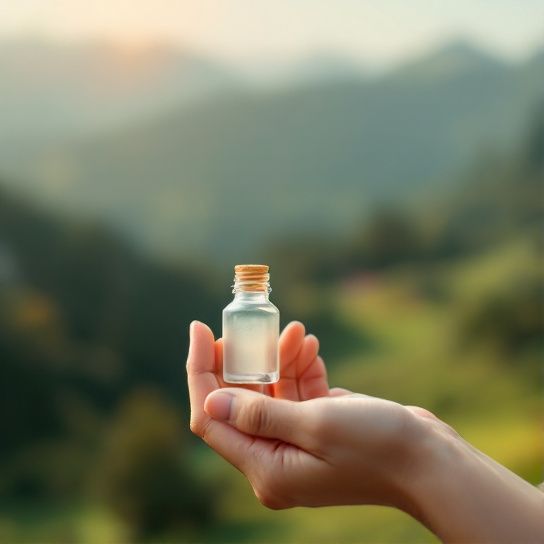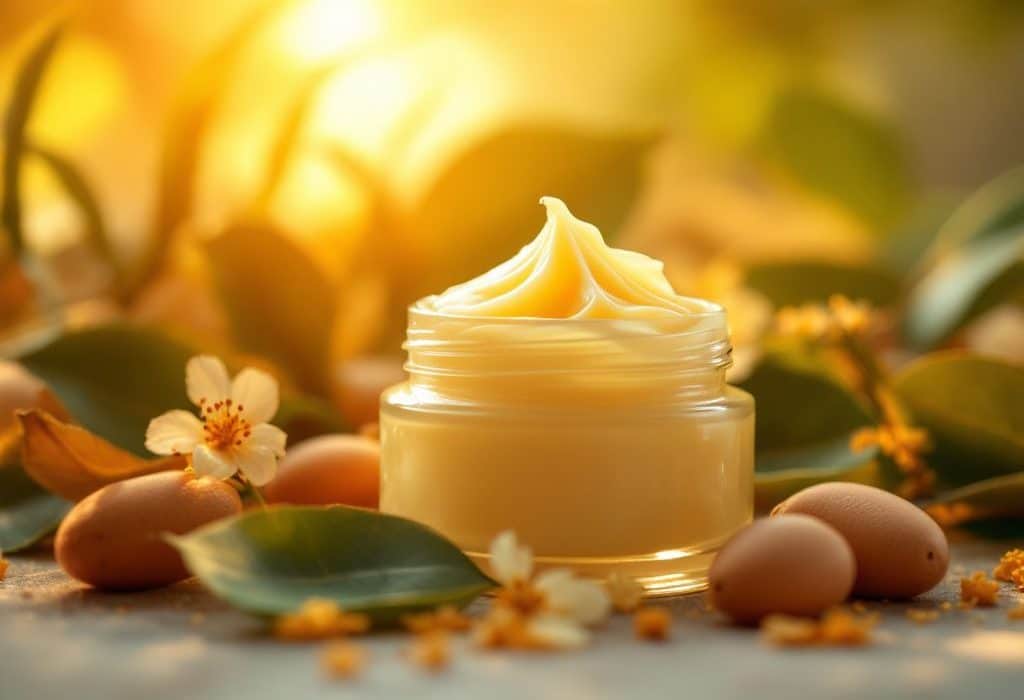Hey, have you ever felt like you’re constantly searching for a solution to your persistent skin issues? Maybe it’s dry patches, a lack of that luminous glow, or just the ever-illusive softness that seems only achievable in skincare commercials? It’s a common ordeal, trust me. We all want that flawless, moisturized finish—a recipe for confidence and happiness if you ask me. And more often than not, our shelves become filled with pricey creams and serums that don’t deliver on their promises.
But let’s get real for a minute. What if the secret is to strip down your routine and embrace the magic of something simple? Enter shea butter, the unsung hero of shea butter is t! Known for its buttery goodness, (pun totally intended), shea butter is that pocket ace — a powerhouse moisturizer waiting to transform your skin routine.
Why Shea Butter Stands Out in Natural Skincare
So, what makes shea butter so extraordinary? It’s more than just another name in the long list of skincare buzzwords. Shea butter is derived from the nuts of the shea tree, primarily found in West Africa. This natural ingredient is super-loaded with vitamins and fatty acids—perfect for luscious skin! It’s similar to having vitamin E, vitamin A, and essential fatty acids all packed into one dreamy ingredient.
Picture this: a dense, creamy substance that spells relief for dry skin, ongoing hydration, and that dewy feel without the undue greasiness. Have you ever tried slathering lotion that ends up feeling more like a slip ‘n slide? Thankfully, that won’t be the case here.
The Composition that Works Wonders
At the heart of shea butter’s magic are its primary components—triglycerides and non-saponifiable fatty acids (fancy words, but they basically mean nourishment and protection). These elements protect and rejuvenate skin by healing it from within. They create a moisture barrier without clogging your pores, a claim not all moisturizers can stake!
But how does this pan out into actual benefits for you?

The Extraordinary Benefits of Shea Butter
- Ultimate Moisturizer: Shea butter’s rich texture deeply penetrates to moisturize and nourish. Use it liberally—honestly, your skin will just drink it up.
- Healing Properties: Think of shea butter as the Band-Aid of skincare. With anti-inflammatory properties, it soothes irritated skin, perfect if you’re dealing with eczema or redness.
- Wrinkle Reducing Wonder: Packed with vitamin A, shea butter may help prevent wrinkles and fine lines. I know, it’s like discovering a time machine for your skin!
- Non-comedogenic: This means it won’t clog pores. Unlike heavy creams that sit on the surface, shea butter blends seamlessly with the skin’s natural oils.
- Natural Protection: With a slight SPF (around SPF 6), it provides some UV protection. Don’t throw out the sunscreen yet, but every bit counts, right?
How to Incorporate Shea into Your Routine
Perhaps the next thought on your mind is, “How on earth do I incorporate this miracle butter into my everyday skin routine without overwhelming my skin?” It’s easier than you may think, and you don’t have to overhaul your existing regimen.
Step-by-Step to Shea Success

- Start Simple:
- Begin by using shea butter as a night moisturizer. Post-cleansing and toning, melt a pea-sized amount between your palms, and gently massage it into your face and neck.
- Extend the Love:
- Shea isn’t just for facial skin. Apply it liberally on elbows, knees, or any rough spots post-shower. This deep hydration will keep ash away and smooth any hard skin.
- Create a Body Butter:
- Mix shea butter with coconut oil or almond oil. A DIY body butter can enhance your skin routine, creating that head-to-toe glow.
- Makeup Primer Substitute:
- Dab a tiny bit of shea butter onto your skin before makeup application. It forms a smooth base and compared to store-bought primers—with their long ingredient list—this has just one pure, beneficial component.
- 5. **Control with Compromises:
- Worry about the rich texture causing congestion? Blend shea butter with a drop of essential oil like tea tree or a lavender concoction. A vibrant blend with skin-calming benefits? Count us in.
Bringing shea butter into your routine takes intention but not enormous effort. And believe me, you’ll thank yourself later.
Real Talk: Considerations and Common Mistakes
Okay, let’s step away from pure bliss for a sec and keep things honest. While we dive into natural skincare, as with all good things, moderation is key. Here’s a bit of tough love to ensure you avoid turning shea from friend to foe:
- Patch Test Always! If you’re new to shea, play it safe and do a patch test before slathering it all over. Allergies aren’t shea’s doing, but it’s always a good habit.
- Understand Your Skin: Everyone’s skin is different. Some deal well with intense moisture, and others—well, not so much. Know what works for you.
- Balance it Out: Shea butter can be rich, hence why we love it! But during hot, humid months, use it sparingly on your face if you’re prone to oiliness.
On the Hunt for Quality Shea Butter

It doesn’t end at knowing how beneficial shea butter can be—you want the right kind. High-quality shea is ivory-colored and has a slightly nutty aroma. Avoid anything overly processed or bleached white as it loses nutrients. Check the label—a pure shea should have zero additives.
You see, paying attention to quality might make all the difference between achieving that glow or just sliding around the ‘what ifs’ pool.
Let Shea Butter Fulfill its Magic
As we meander through the intricacies of natural skincare, the art of simplicity stands undeniably profound. It’s about time we honor ingredients that have warmth and history-backed efficiency.
When life gets finicky or expectations of your skincare grow mundane, give this one a try. Let the natural allure of shea butter fertilize emerging confidence and healthier skin. Trust me on this one.
Now go let that shea magic work wonders. And hey, never underestimate the simplicity of shea beauty—what’s age-old might end up being one new age for you! Here’s to butter bathing and crossing off those elusive skincare goals! Cheers to confident, hydrated skin.
Frequently Asked Questions
What are the benefits of using natural skincare products?
Natural skincare products offer several benefits, including being gentler on the skin, reducing the risk of irritation and dryness, and providing nourishment with nutrient-rich ingredients. They are free from harsh chemicals, artificial colors, and fragrances, making them suitable for sensitive skin. Additionally, natural skincare products can help prevent premature aging by protecting against free radical damage and promoting skin health with antioxidants and essential nutrients[1][3][5>.
How do natural skincare products differ from conventional skincare products?
Natural skincare products are primarily composed of ingredients derived from plants, animals, or minerals, with minimal or no chemical or synthetic substances. In contrast, conventional skincare products often contain harsh chemicals, preservatives, and synthetic ingredients that can strip the skin of its natural oils and cause irritation. Natural products adhere to stricter standards, such as the absence of pesticides and fertilizers, and are generally more eco-friendly[1][3][5>.
What natural ingredients are commonly used in natural skincare products?
Common natural ingredients used in skincare include coconut oil, shea butter, aloe vera, green tea, chamomile, argan oil, and honey. These ingredients are rich in vitamins, antioxidants, and essential fatty acids that help moisturize, soothe, and protect the skin. For example, aloe vera is moisturizing and soothing, while green tea helps reduce oxidative stress and cellular aging[1][3][5>.
Are natural skincare products suitable for all skin types?
Yes, natural skincare products are suitable for all skin types, including sensitive skin. They are formulated to work in harmony with the skin’s natural mechanisms, providing gentle and effective care. Whether you have dry, oily, or sensitive skin, there are natural products available that can address specific skin concerns without causing irritation or side effects[1][3][5>.
References

